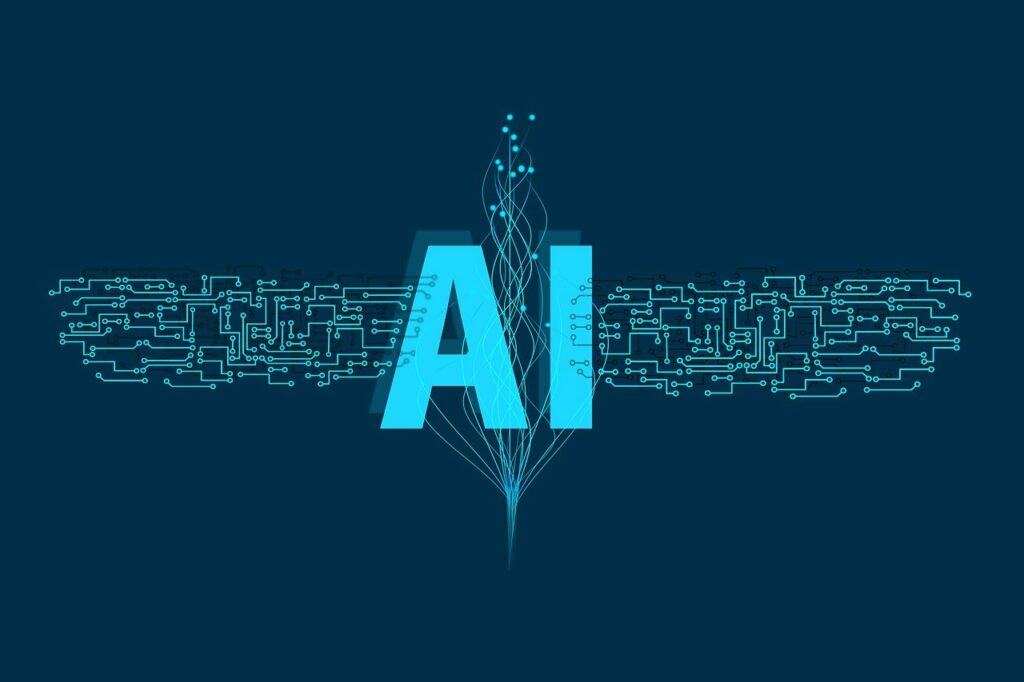Artificial Intelligence (AI) and Machine Learning (ML) have emerged as transformative forces, reshaping industries and pushing the boundaries of innovation. In this in-depth exploration, we delve into the intricacies of valuing patents in the realm of AI and ML. From understanding the unique challenges to unraveling the methodologies that drive accurate valuation, this comprehensive guide aims to provide insights for stakeholders navigating the dynamic landscape of AI and ML patents.
AI and ML in Patent Valuation
In the relentless march of technological progress, AI and ML innovations emerge as vanguards, permeating diverse sectors from healthcare to finance. This section delves into the dynamic landscape these innovations create, presenting a nuanced understanding of their foundational dynamics. Stakeholders navigating the realm of patent valuation must grasp the intricacies of AI and ML, recognizing the unique challenges posed by their dynamic nature and rapid evolution.

Intricacies of Dynamic Evolution
AI and ML technologies constitute a technological frontier where evolution is not just rapid but constant. Understanding the dynamics requires a keen awareness of the ever-changing landscape. This section unfolds the layers of intricacy within the dynamic evolution of AI and ML innovations, providing stakeholders with insights into the challenges and opportunities embedded in this perpetual state of transformation.
Navigating the Expansive and Interconnected Landscape
Unlike traditional patents, the AI and ML patent landscape is not confined; it’s expansive and interconnected. The section explores the vastness of this landscape, emphasizing the need for a nuanced approach in valuation. Every patent is a piece in a complex puzzle, intricately connected to others. Stakeholders must navigate this expansive and interconnected terrain to accurately assess the distinctiveness of each invention, recognizing the challenges presented by the interwoven nature of AI and ML patents.
Capturing Distinctiveness Amid Complexity
The distinctiveness of AI and ML patents is entwined with the complexity of their landscape. This section unravels the uniqueness, shedding light on the factors that set it apart from traditional technological domains. Stakeholders are guided through the challenges inherent in capturing the distinctiveness of each invention, emphasizing the need for an astute approach that considers the intricate interplay of factors within the dynamic and evolving realm of AI and ML patent valuation.
Methodologies in AI and ML Patent Valuation
Quantitative Precision: Navigating AI and ML Patent Valuation
In the dynamic landscape of AI and ML patents, quantitative methodologies stand as key navigators in the valuation process. These approaches play a pivotal role in assessing the financial worth of innovations by providing a numerical framework. Stakeholders engage in meticulous analyses, from evaluating market potential to scrutinizing licensing opportunities. This section delves into the quantitative intricacies of AI and ML patent valuation, shedding light on the metrics and analyses that underpin numerical assessments.
Deciphering Metrics and Analyses
Within the realm of AI and ML patent valuation, quantitative approaches are the bedrock of precision. Metrics such as market potential become crucial benchmarks, offering insights into the scalability and financial viability of innovations. Concurrently, analyzing licensing opportunities involves a meticulous examination of potential revenue streams, strategically aligning with the technology’s market positioning. This section unravels the intricacies of these quantitative metrics, providing stakeholders with a roadmap to gauge the financial implications of AI and ML patents.
Beyond Numbers: Embracing Qualitative Dimensions
While quantitative approaches offer numerical precision, the valuation of AI and ML patents transcends mere financial metrics. This section ventures into the qualitative dimensions that enrich the valuation process, providing a holistic understanding of the multifaceted nature of these innovations. Stakeholders delve into qualitative aspects such as the societal impact of the technology, its uniqueness in the market, and its potential for future applications.
Holistic Understanding of Value
In the evaluation of AI and ML patents, qualitative dimensions contribute significantly to the holistic understanding of their value. Stakeholders recognize that societal impact goes beyond financial considerations, acknowledging the transformative potential these technologies hold. Uniqueness becomes a pivotal aspect, emphasizing how innovations stand out in a crowded landscape. Additionally, potential for future applications provides insights into the longevity and adaptability of AI and ML patents. This section emphasizes the need to embrace qualitative dimensions, recognizing the multifaceted nature that defines the true value of AI and ML innovations.

Legal and Ethical Considerations in AI and ML Patent Valuation
The integration of AI and ML with intellectual property rights introduces intricate layers of complexity into the valuation process. Stakeholders involved in the valuation of AI and ML patents must traverse a legal landscape that spans from patent eligibility to infringement considerations. This section provides a comprehensive overview, guiding stakeholders through the legal considerations intrinsic to AI and ML patent valuation, ensuring that the integrity of assessments remains steadfast amid the complexities of intellectual property rights.
Understanding Patent Eligibility and Beyond
In the realm of AI and ML, navigating intellectual property rights requires a nuanced understanding of patent eligibility. Stakeholders delve into the intricacies of what constitutes eligible subject matter, acknowledging the evolving standards in a rapidly advancing technological landscape. Additionally, considerations of potential infringement further heighten the complexity, demanding a vigilant approach to safeguard the proprietary nature of AI and ML innovations. This section serves as a guide through this legal maze, offering insights into the critical considerations that shape the valuation process.
Ethical Compass: Responsible Innovation in AI and ML Patent Valuation
As AI and ML technologies advance, ethical considerations take center stage in the valuation of patents. The ethical dimensions associated with AI and ML patents encompass a spectrum, ranging from addressing biases embedded in algorithms to grappling with the societal implications of widespread adoption. This section delves into the ethical nuances, emphasizing the imperative for a responsible approach to innovation in the context of AI and ML patents.
Mitigating Bias and Societal Impact
The ethical considerations within AI and ML patent valuation extend beyond traditional legal boundaries. Stakeholders must grapple with the challenges of mitigating bias in algorithms, ensuring that innovations align with ethical standards. Moreover, the societal impact of widespread adoption necessitates a careful examination of the consequences and responsibilities associated with AI and ML technologies. This section serves as a compass for stakeholders, guiding them through the ethical dimensions and highlighting the need for responsible innovation in the evolving landscape of AI and ML patent valuation.
The Role of Industry Collaboration and Technology Transfer
Fostering Collaboration: Impact on AI and ML Patent Valuation
In the dynamic arena of AI and ML, collaboration emerges as a powerful catalyst for innovation. This section delves into collaborative innovation models within the industry, shedding light on how partnerships and alliances influence the valuation of patents. From joint ventures to open-source initiatives, collaborative models play a pivotal role in shaping the value of AI and ML patents.
Joint Ventures and Open-Source Dynamics
Within the collaborative landscape of AI and ML, joint ventures stand as strategic alliances that propel innovation. Stakeholders engage in partnerships that leverage collective expertise and resources, influencing the valuation of patents through synergistic endeavors. Additionally, open-source initiatives redefine traditional boundaries, fostering collaboration beyond organizational constraints. This section explores the dynamics of joint ventures and open-source models, unraveling their impact on the valuation of AI and ML patents.
Bridging Research and Industry: The Role of Technology Transfer Offices
In the journey from research to commercialization of AI and ML patents, Technology Transfer Offices (TTOs) emerge as pivotal intermediaries. This section explores the multifaceted functions of TTOs in the AI and ML landscape, emphasizing their role in bridging the gap between academic research and commercialization. TTOs become instrumental in facilitating the transfer of knowledge, thereby shaping the trajectory of AI and ML patent valuation.
Navigating the Interplay Between Research and Commercialization
The functions of TTOs extend beyond mere facilitation, encompassing a nuanced understanding of the interplay between research and commercialization. Stakeholders rely on TTOs to navigate the complexities of transferring AI and ML innovations from academia to industry. This section provides insights into how TTOs impact the valuation of patents, highlighting their significance in ensuring that the transformative potential of AI and ML technologies is effectively translated into commercial success.
Future Trajectories in AI and ML Patent Valuation
AI at the Helm: Shaping the Future of Patent Valuation
The trajectory of patent valuation is intricately connected to the evolving integration of AI technologies. This section explores the paradigm shift where AI transcends being merely the subject of valuation, transforming into an active participant in the valuation process. From automating analyses to predicting market trends, AI technologies are increasingly becoming indispensable tools, shaping the future trends in patent valuation.
Automating Analyses and Predicting Market Trends
In the dynamic landscape of patent valuation, the integration of AI heralds a future marked by automation and predictive capabilities. AI technologies streamline analyses, providing stakeholders with efficient tools to navigate the complexities of patent valuation. Predicting market trends becomes a strategic advantage, empowering decision-makers to stay ahead in the rapidly evolving technological landscape. This section delves into the emerging trends where AI actively contributes to the valuation process, offering insights into the transformative potential it holds.
Navigating Ethical Frontiers: AI in the Ethical Landscape of Patent Valuation
As AI becomes more embedded in the valuation landscape, ethical considerations take center stage. This section explores the ethical dimensions associated with AI technologies in the context of patent valuation. From ensuring unbiased algorithms to fostering transparent decision-making, the ethical use of AI becomes a critical aspect of the valuation process. Stakeholders navigate the evolving landscape of ethical AI, recognizing the need for responsible and transparent practices in leveraging AI technologies for patent valuation.
Ensuring Ethical AI Practices
In the integration of AI in patent valuation, stakeholders grapple with the responsibility of ensuring ethical AI practices. The section emphasizes the imperative of unbiased algorithms, advocating for transparency in decision-making processes. Ethical considerations become integral to the utilization of AI technologies, shaping the ethical landscape of patent valuation. This exploration provides insights into the evolving ethical dimensions, guiding stakeholders towards responsible and principled integration of AI in the valuation process.

Conclusion: Navigating the Complexities of AI and ML Patent Valuation
In conclusion, the assessment of patents within the domain of AI and ML demands a nuanced grasp of the underlying technologies, encompassing their legal and ethical ramifications. Additionally, staying attuned to the ever-evolving dynamics of the industry becomes paramount for stakeholders engaging in valuation processes.
Navigating the intricate landscape of AI and ML patents requires a comprehensive approach, acknowledging the complexity inherent in these technologies. Stakeholders are tasked with balancing quantitative precision and qualitative insights, recognizing the symbiotic relationship between numerical assessments and a nuanced understanding of societal impact and technological distinctiveness.
As the field of AI and ML progresses, a profound understanding of these intricacies is not merely beneficial but essential. This knowledge becomes a linchpin for fostering innovation, propelling economic growth, and actively participating in the shaping of the future of AI and ML patent valuation. Stakeholders are positioned as key contributors in a landscape that continually evolves, reflecting the transformative potential of these technologies on innovation, economic landscapes, and the broader scope of patent valuation.

